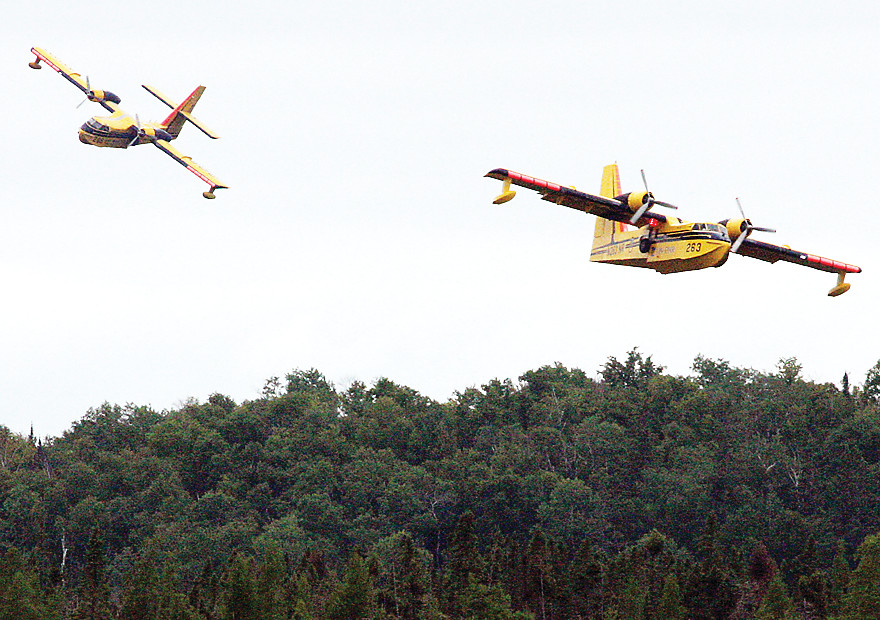Support the Timberjay by making a donation.
Unexpected air show
DNR’s CL-215s conduct training exercise on Lost Lake
LOST LAKE—A Department of Natural Resources training exercise made for quite an air show for a handful of anglers and residents near Lost Lake last weekend, as a pair of the agency’s CL-215 …
This item is available in full to subscribers.
Attention subscribers
To continue reading, you will need to either log in to your subscriber account, or purchase a new subscription.
If you are a current print subscriber, you can set up a free website account and connect your subscription to it by clicking here.
If you are a digital subscriber with an active, online-only subscription then you already have an account here. Just reset your password if you've not yet logged in to your account on this new site.
Otherwise, click here to view your options for subscribing.
Please log in to continue |
Unexpected air show
DNR’s CL-215s conduct training exercise on Lost Lake
LOST LAKE—A Department of Natural Resources training exercise made for quite an air show for a handful of anglers and residents near Lost Lake last weekend, as a pair of the agency’s CL-215 water-scooping aircraft went through their paces on the lake over the Labor Day weekend.
It was the second time in a month that the impressive aircraft had utilized Lost Lake, located just west of Lake Vermilion’s Pike Bay, for training runs.
The pilots who operate the big craft have relied on training, more than active duty, so far this year, as the wet conditions have kept wildfires to a minimum and kept the planes mostly grounded.
While the DNR will frequently lend the planes to fire-fighting efforts elsewhere, DNR Wildfire Aviation Specialist Sheldon Mack said most fires in other parts of the U.S. and Canada have been in very high terrain, that’s not well-suited for the planes’ abilities.
“Because it’s been quiet, we end up doing more training,” said Mack.
The training is necessary, said Mack, both to keep the pilots proficient at their highly technical task as well as to continuously check the operating systems of the plane. “Generally, we try to do something with the planes about every seven to ten days, usually the trainings are limited to less than an hour.”
The planes are typically based in Hibbing, which makes lakes in northern St. Louis County likely targets for their exercises. But not every lake is acceptable, noted Mack. “You have to have about a mile long approach, without a lot of reefs or other obstructions,” he said. “We also have to make sure there are no invasive species that could be spread.”
While the planes might be back at Lost Lake before too long, Mack said they do try to move the planes around to different lakes. While he said most people seem to enjoy watching the planes, he added, “we don’t want to wear out our welcome.”









